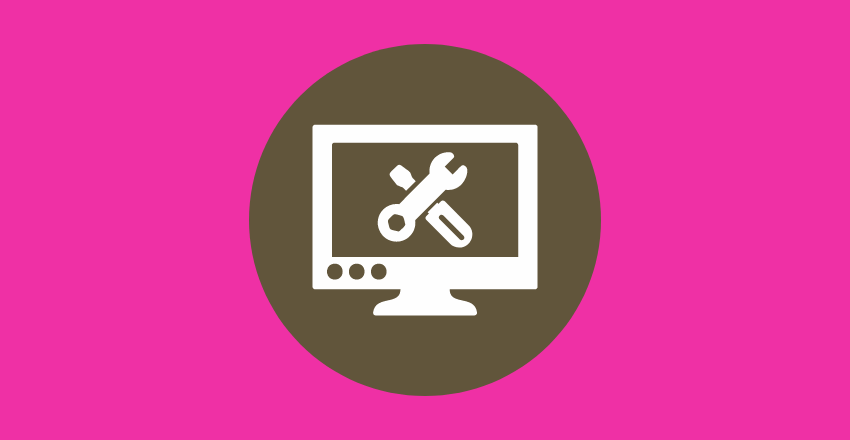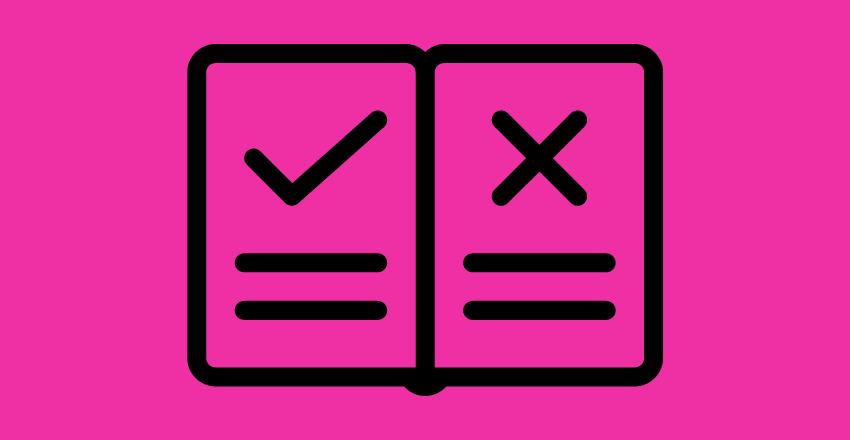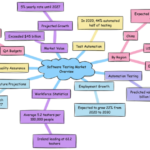
Who has primary responsibility for assuring product or service quality? Join us as we uncover the pivotal roles involved in maintaining excellence.
A Brief Introduction to Software Development
Software development is like preparing a gourmet meal. It involves carefully selecting ingredients (the coding languages), following a well-established recipe (the software development lifecycle), and preparing the dish to perfection (the final software product).
Imagine your favorite cooking show: the developers are the chefs, the QA engineers are the food critics and the software? That’s the star dish, ready to be served to customers. If you’re intrigued by this scenario, let’s explore each element in detail.
Overview of Quality Assurance in Software Development
Quality Assurance (QA) is the secret ingredient in the software development kitchen. It’s not about finding defects after the dish is cooked. It’s about incorporating quality throughout the cooking process. In our software world, this means ensuring quality at every step of the software development lifecycle.
Here’s a quick snapshot:
| Software Development Phase | QA Practice |
|---|---|
| Requirement Analysis | QA team reviews and analyzes the requirements for testability |
| Design | QA participates in design reviews to ensure compliance with standards |
| Coding | Developers conduct unit testing; QA prepares for integration testing |
| Testing | QA conducts integration, system, and acceptance testing |
| Deployment | QA conducts smoke/sanity testing in the production environment |
Incorporating QA practices into each phase improves the overall software product quality, ensuring a delightful experience for end-users.
The Importance of Quality Assurance for Product or Service Quality
Remember the joy of biting into a perfectly cooked meal? In software terms, that’s what impeccable quality assurance does. It’s the critical process that ensures your software runs smoothly, meeting and often exceeding user expectations.
When done right, QA mitigates risks, prevents defects, and enhances the software service quality. Let’s say you’ve developed a promising e-commerce app. You ensure your app’s flawless performance through rigorous QA methodologies, securing user trust and boosting your brand’s reputation.
The Pivotal Question – Who Has Primary Responsibility for Assuring Product or Service Quality?
Now comes the million-dollar question: Who has primary responsibility for assuring product or service quality? Is it the developer who whips up the code? The QA engineer who tastes and tests every feature? The project manager who orchestrates the entire process? Or is it someone else altogether?
Who has primary responsibility for assuring product or service quality? It’s a shared responsibility that drives success.
Roles in Software Development and Quality Assurance

Having explored the backdrop of software development and QA, let’s delve into the roles that turn these concepts into reality. Imagine software development as an elaborate orchestra and answered the question, “Who has primary responsibility for assuring product or service quality?”
Each role, whether the developer, tester, or project manager, is an instrumentalist playing their unique notes. Together, they create a harmonious symphony of quality software.
Brief Description of Roles Involved in Software Development
Software development isn’t a one-man show. It’s a collective effort involving a variety of roles, each contributing to creating an outstanding software product or service.
Here’s a sneak peek at a few key roles:
- Software Developers: The composers of the coding symphony. They breathe life into a software product by writing and debugging code.
- QA Engineers: The critical listeners in the concert. They ensure that every note (or code) hits the right chord in quality.
- Project Managers: The conductors of the orchestra. They oversee the project, ensuring it’s completed on time and within budget without compromising quality.
- Product Owners/Stakeholders: The audience enjoying the symphony. They define the product’s vision, and their satisfaction is the ultimate goal of the entire process.
Detailed Analysis of Roles Directly Related to Quality Assurance
Now, let’s turn up the volume on the roles that directly affect the quality assurance process and get to the meat of our question, “Who has primary responsibility for assuring product or service quality?”.
Role of Software Developers in QA
Software developers are like diligent composers. They write the code and ensure its quality by performing unit tests. Unit testing is a method where individual units of source code are tested to ascertain whether they are fit for use.
Here’s an example of a simple unit test in Java using JUnit:
@Test
public void testAdd() {
MathUtils mathUtils = new MathUtils();
assertEquals(5, mathUtils.add(2, 3),
"The add method should add two numbers correctly");
}This test checks if the add method in the MathUtils class correctly adds two numbers. If the method doesn’t work as expected, the test will fail, alerting the developer about a potential issue.
Pro Tip: Incorporating unit tests in the development phase allows developers to catch and fix bugs early, enhancing the software’s quality.
Role of QA Engineers in QA
QA Engineers are the guardians of quality. They set up test environments, create test cases, execute test scripts, and report defects. They use manual and automated testing techniques to ensure the software’s smooth performance.
For instance, QA engineers use Selenium, a popular automated testing tool, for testing web applications.
A simple Selenium script to test a web page might look like this:
WebDriver driver = new FirefoxDriver();
driver.get("http://www.google.com/");
assertTrue(driver.getTitle().startsWith("Google"));
driver.quit();Selenium opens the Google homepage in this code snippet and checks if the title starts with “Google.” If there’s a discrepancy, the test fails, indicating a potential issue.
Pro Tip: Automation is a boon for QA engineers, but don’t forget the power of manual testing! A healthy balance of both can help create a comprehensive testing strategy.
Role of the Software Developer in Quality Assurance

Alright, folks, let’s dive deeper into the role of software developers in quality assurance. Apart from being mere code wizards, developers are instrumental in setting the tone for quality.
How the Developer’s Role Contributes to Quality Assurance – who has primary responsibility for assuring product or service quality
Simply put, a developer’s contribution to quality assurance is akin to a baker’s precision in ensuring the quality of their bakery items.
Much like how a baker would choose the best ingredients and follow the right recipe, developers ensure the quality of their code by adhering to coding standards and performing unit tests.
For instance, they might use tools like ESLint for JavaScript or Pylint for Python to keep their code clean and error-free. These tools analyze the code for potential issues, thus improving the quality of the code even before it reaches the QA team.
The Role of Testing in a Developer’s Workflow
A developer’s life isn’t just about writing code; testing plays a critical role too. Developers employ unit testing, which involves testing individual software units to ascertain their fitness.
Imagine you’re building a calculator app. As a developer, you’ll write a unit test for every function, such as addition, subtraction, etc.
Here’s what a unit test for the addition function might look like:
@Test
public void testAdd() {
Calculator calculator = new Calculator();
assertEquals(7, calculator.add(3, 4),
"The add method should add two numbers correctly");
}
This test ensures that the add method in the Calculator class is working as expected.
Pro Tip: Implementing unit tests early in the software development lifecycle helps catch bugs when they’re easiest to fix, boosting the software’s overall quality.
Best Practices for Developers to Ensure Quality
When it comes to quality assurance, a few good habits can make a developer’s code stand out:
- Adhere to coding standards: A well-structured and clean code is easier to test and debug.
- Use a Version Control System (VCS): A VCS like Git helps track changes, identify issues, and facilitate seamless collaboration.
- Employ Continuous Integration/Continuous Delivery (CI/CD): These practices allow developers to integrate their work frequently and ensure that the software can be released into production anytime.
- Stay up-to-date with new technologies and tools: The software development world is ever-evolving. Developers can leverage the best tools and practices to deliver high-quality code by staying current.
By following these best practices, developers can take ownership of their code and product quality. However, this is just one piece of the puzzle.
The QA team, project managers, and stakeholders also contribute to the product’s overall quality, which answers the question, “Who has primary responsibility for assuring product or service quality?”.
Role of the Quality Assurance (QA) Team

Let’s shift gears and focus on the unsung heroes of software quality – the Quality Assurance team. You might wonder, “Why ‘unsung’?” Well, when everything works flawlessly, their work often goes unnoticed. However, they are the first line of defense when things go awry.
Overview of the QA Team’s Responsibilities
The QA team is like a professional critic who examines the software’s every aspect to ensure it hits all the right quality notes. They are the gatekeepers who ensure that every line of code, every feature, and every user interaction meets the expected standards of performance, functionality, and reliability.
The QA team’s responsibilities are vast and varied, from planning testing protocols, executing tests, reporting bugs, validating bug fixes, and ensuring that the software conforms to the specified requirements and user expectations.
The Significance of the QA Team in the Software Development Lifecycle
To truly grasp the QA team’s importance, we must trace their role throughout the Software Development Lifecycle (SDLC). The QA team swings into action when a product’s requirements are documented.
- During the design phase, the QA team reviews the design to identify potential issues affecting the software’s quality.
- In the development phase, they collaborate with developers, ensuring that the units of software function as intended.
- They put the software through rigorous testing procedures in the testing phase using various testing techniques and tools. If any bugs are found, they ensure these are fixed and retested.
- Even after the deployment, the QA team continues monitoring the software to ensure it performs optimally in the live environment.
Essentially, the QA team is like the lighthouse guiding the software development ship, ensuring it does not stray off course.
Techniques Used by the QA Team for Quality Assurance
The QA team employs an array of techniques to guarantee quality. Here are a few:
- Manual Testing: QA engineers manually test the software for defects. This is crucial for checking user-friendliness and the software’s look and feel.
- Automated Testing: QA uses tools like Selenium, JMeter, and LoadRunner to automate repetitive tasks and perform non-functional testing such as load testing.
- Test-Driven Development (TDD): In this approach, the QA team writes tests before the software is developed. This ensures that the code is testable and unambiguous.
- Behavior-Driven Development (BDD): The QA team writes tests focusing on the software’s behavior, ensuring it behaves as expected.
Here’s an example of an automated test using Selenium:
WebDriver driver = new ChromeDriver();
driver.get("http://www.google.com/");
assertTrue(driver.getTitle().startsWith("Google"));
driver.quit();This code snippet launches Google’s homepage and verifies if the title starts with ‘Google.’ If not, it flags an error, highlighting a potential issue.
Pro Tip: Always strive for a balance between manual and automated testing. While automation improves speed and efficiency, manual testing ensures a human touch and subjectivity in quality assurance.
By playing an active role throughout the SDLC and employing a mix of techniques, the QA team ensures that software quality is not an afterthought but an integral part of the development process.
Role of the Project Manager in Quality Assurance

Now, let’s cast the spotlight on the maestros of project management, the project managers (PMs). As orchestrators of the software development symphony, PMs play a pivotal role in ensuring the tune of quality rings clear and loud.
Understanding the Project Manager’s Role in Software Development
Project Managers are like seasoned navigators, guiding the software development vessel from the port of ideas to the harbor of successful deployment. They plan, coordinate, and ensure that all project parts, including quality assurance, are harmonious.
A project manager’s role is multifaceted. They define the project scope, plan the project schedule, manage resources, and, most importantly, act as a communication bridge among stakeholders, developers, and the QA team.
In a nutshell, they ensure the smooth sailing of the project while keeping an eye on the destination—high-quality software.
How the Project Manager Ensures Quality of the Software Product or Service
“But how does a project manager assure quality?” You might wonder. The answer lies in their methodical and strategic approach. Here’s how they ensure quality:
- Defining Quality Standards: PMs define quality for a particular software project. To establish these quality benchmarks, they refer to organizational standards, industry best practices, and client expectations.
- Quality Planning: They devise a quality plan outlining the quality objectives, the QA and QC (Quality Control) roles and responsibilities, and the tools and techniques for quality assurance.
- Resource Management: PMs ensure the team can access necessary resources—quality assurance tools, the latest technologies, or even training for new methodologies.
- Risk Management: PMs identify potential risks that could hamper the software’s quality and devise strategies to mitigate them.
- Performance Monitoring: PMs keep a close watch on project progress and make sure that quality is not sacrificed for speed or cost.
- Encouraging a Quality Culture: Lastly, they foster a culture where quality is everyone’s responsibility, thus integrating quality assurance into every stage of software development.
Pro Tip: A project manager with a firm grasp of QA practices can significantly elevate the quality of the final product. This underscores the importance of continuous learning and staying updated with the latest QA and software development.
A project manager advocates for quality, ensuring it permeates every layer of the software development process. However, their role wouldn’t be influential without the active involvement of another crucial group – the stakeholders.
Role of Stakeholders in Quality Assurance

Let’s pivot to another set of key players in software development—the stakeholders. You may wonder, “Who are these stakeholders?” They can range from clients, end-users, and business analysts, to investors.
As those directly or indirectly affected by the software’s quality, stakeholders have a substantial role in quality assurance.
The Importance of Stakeholder Involvement in Quality Assurance
In the software development symphony, stakeholders are the listeners. They are the ones who can say if the music resonates if it hits the right notes of quality. Therefore, their involvement is crucial for attaining high-quality software.
Stakeholder involvement ensures the software aligns with the user’s needs and expectations. They can provide unique insights and perspectives that could lead to innovative solutions, increasing the software’s overall quality and value.
Ways in Which Stakeholders Can Ensure Quality in Software Development
But how exactly can stakeholders contribute to quality assurance? Here are some ways:
- Requirement Gathering: Stakeholders are pivotal in defining the software’s requirements. Clear and comprehensive requirements are the foundation for high-quality software.
- Providing Feedback: Stakeholders, especially end-users, can provide feedback throughout the software development lifecycle. This feedback is invaluable in uncovering usability issues, functional gaps, and areas of improvement.
- Participation in User Acceptance Testing (UAT): In UAT, the software is tested in real-world scenarios by the actual end-users. Their inputs help validate if the software meets the specified requirements and user expectations.
- Continuous Engagement: Stakeholders should stay engaged throughout the development process. Their ongoing input and collaboration with the development team can steer the project toward quality goals.
Pro Tip: Encourage open lines of communication with stakeholders. Their inputs and insights could be the key to unlocking the true quality potential of your software.
Stakeholders are not just passive recipients of the end product. Their active involvement can significantly enhance the quality of the software. They are an integral part of the quality assurance equation. However, the equation is not complete without the right tools and technologies.
Tools and Technologies for Quality Assurance

In the pursuit of assuring product or service quality, we rely heavily on a variety of tools and technologies. They’re our trusted companions, helping us maintain and elevate quality across the software development lifecycle. Let’s dive in and explore these instrumental aids in more detail.
Overview of Tools and Technologies Used in Quality Assurance
Software development has seen an astronomical rise in tools and technologies designed to improve quality assurance. From bug-tracking tools like Jira and test automation tools like Selenium to continuous integration tools like Jenkins—there’s a vast toolbox available to a modern QA professional.
Let’s take a closer look at some of these categories:
- Bug Tracking Tools: Software like Jira, Bugzilla, and Mantis help manage, and track reported software bugs in software development projects.
- Test Automation Tools: Tools like Selenium, TestComplete, and Katalon Studio automate the software testing process, enabling faster and more efficient QA.
- Continuous Integration/Continuous Delivery (CI/CD) Tools: Jenkins, Bamboo, and CircleCI help automate the stages of the software delivery process – from integration with a shared repository to delivering the product to the end customer.
- Performance Testing Tools: LoadRunner, Apache JMeter, and Gatling simulate user load on a software system, helping identify performance bottlenecks.
- Security Testing Tools: OWASP ZAP, Nessus, and Wireshark help identify potential vulnerabilities in the software, ensuring robust security.
How These Tools Contribute to the Assurance of Product or Service Quality
“But how do these tools ensure quality?” you might ask. These tools streamline the QA process, automate repetitive tasks, and provide insights that guide decision-making, contributing to quality in the following ways:
- Efficiency: Automated testing tools execute tests much faster than humans, reducing the time to market and speeding up the feedback loop.
- Accuracy: Automation eliminates human error, increasing the accuracy of test execution and defect logging.
- Comprehensiveness: These tools allow for exhaustive testing—multiple test cases, different environments, or various data sets—ensuring a comprehensive quality check.
- Performance Insights: Performance testing tools provide insights about the software’s behavior under load, helping optimize for better performance.
- Security Assurance: Security testing tools ensure the software meets necessary security standards, providing a safer product for the end-user.
Pro Tip: Choosing the right tools for your needs can significantly impact your QA process. When choosing, consider your project requirements, budget, team expertise, and the tool’s community support.
Tools and technologies are the backbones of modern QA practices, enabling us to deliver high-quality software consistently and efficiently.
The Role of Standards and Protocols in Assuring Quality

When venturing into software development, the standards and protocols for quality assurance act as our indispensable map. Let’s journey to discover these guidelines’ significant role in quality assurance.
Grasping the Significance of Standards and Protocols in Quality Assurance
Firstly, standards and protocols offer a solid foundation for consistently applying quality assurance practices. Essentially, they are the rulebook outlining how we should strategize, coordinate, and manage processes to uphold the quality of products or services.
For instance, we might follow the ISO 9001 standard, recognized globally for specifying the criteria for a quality management system. Alternatively, we may adopt the IEEE 829 standard, which prescribes a structured approach to software test documentation.
Imagine these standards and protocols as a recipe for a delightful meal. They enlist the key ingredients (the processes), their quantities (guidelines), and the cooking methodology (implementation strategies) to create a top-notch quality dish (software).
The Domino Effect of Following Standards and Protocols on Product or Service Quality
Next, let’s explore the question, “What’s the tangible impact of adhering to these standards and protocols on the product or service quality?”
- Uniformity: By offering a systematic approach to QA, standards and protocols ensure product quality consistency. As a result, customers are satisfied, and the brand reputation gets a considerable boost.
- Productivity: By clearly defining the processes and setting expectations, these standards minimize the chances of errors, thereby leading to increased efficiency and significant time savings.
- Compliance: Certain industries necessitate adherence to specific standards for regulatory compliance. Following these, we ensure our product is legally compliant and ready for the market.
- Trust: Products that align with recognized standards garner more trust from users and customers, indicating a steadfast commitment to quality.
- Continual Enhancement: Most QA standards advocate for regular auditing and reviews, fostering a culture of continuous improvement.
Pro Tip: We should aim to integrate standards and protocols into our quality assurance process from the very beginning. This forward-thinking approach guarantees that quality is integrated into every development stage rather than being an add-on.
Sticking to quality assurance standards and protocols is similar to navigating with a compass—ensuring our alignment with our quality objectives. It confirms we’re moving toward the right destination.
The Power of Shared Responsibility in Quality Assurance

Quality assurance becomes a potent, collective endeavor when viewed as a shared responsibility. Let’s dive into this concept and its pivotal role in ensuring the quality of software products and services.
Unpacking the Shared Responsibility Model in Quality Assurance
Shared responsibility in quality assurance is a philosophy that assigns an equal responsibility for maintaining product quality to every individual involved in the project. Quality isn’t just the duty of the QA team or the project manager.
It’s the responsibility of developers, stakeholders, and everyone else involved in the software development lifecycle (SDLC).
For example, developers contribute significantly to the product’s quality by employing software testing techniques and adhering to best practices.
Simultaneously, project managers set the stage for quality delivery by ensuring adherence to QA standards and protocols, orchestrating smooth collaboration, and managing resources effectively.
Think of this shared responsibility as a soccer team. Just as each player, from the striker to the goalkeeper, contributes to winning the game, every team member in a software development project plays a part in assuring product or service quality.
Emphasizing Collaboration’s Role in Quality Assurance
The second chapter of our discussion takes us to the crux of this shared responsibility model – collaboration. By actively fostering an environment of collaboration, we can optimize the shared responsibility model’s effectiveness in quality assurance.
For instance, regular team meetings to discuss progress and potential issues, transparent communication across the team, and collaborative problem-solving approaches can boost quality assurance.
This cohesion aligns all team members with the QA objectives and promotes a shared understanding of the product’s requirements, enhancing the product’s quality.
Key Tip: Adopt tools that facilitate effective communication and collaboration among team members. Platforms like Slack, Microsoft Teams, or Jira can significantly streamline collaborative efforts.
Examples: When Collaboration and Shared Responsibility Converge –

Let’s examine two examples to understand the power of shared responsibility and collaboration.
- Case Study 1 – Spotify: Spotify’s tribes-squads-chapters-guilds model is a classic example of collaboration and shared responsibility. This agile model allows autonomous teams (squads) to take ownership of a feature or component of the software, fostering a sense of shared responsibility. This innovative model has been pivotal in Spotify’s ability to deliver a high-quality music streaming service.
- Case Study 2 – Google: At Google, the practice of shared responsibility is reflected in its “Testing on the Toilet” initiative. Google encourages developers to write test cases and conduct initial testing alongside their regular coding tasks, fostering a culture of shared responsibility. This initiative has been instrumental in improving Google’s software quality.
The shared responsibility model, fortified by a strong collaborative culture, can do wonders for quality assurance.
Common Challenges and Solutions 
Taking responsibility for assuring product or service quality often becomes a convoluted task, especially when multiple roles are involved. Let’s dissect seven common problems teams face in defining this responsibility, their consequences, and how we can overcome them.
1. Ambiguity in Responsibility
Problem: The biggest hurdle is often ambiguity. If the responsibility for quality assurance isn’t clearly defined, it can lead to confusion and inconsistency.
Consequence: This lack of clarity can result in some quality aspects being overlooked, leading to subpar product quality.
Solution: Make roles and responsibilities crystal clear from the start. For instance, while developers should ensure quality at the code level, the QA team can focus on overall product testing. As an expert tip, documenting these responsibilities can prevent future ambiguity.
2. Overreliance on QA Team
Problem: There’s a common misconception that the QA team alone should ensure quality.
Consequence: This can lead to other team members becoming less mindful about their contribution to the product’s quality, burdening the QA team.
Solution: Promote the idea of shared responsibility for quality. In a .Net development environment, for example, developers can use tools like Visual Studio’s code analysis to maintain coding standards and prevent bugs.
3. Inadequate Communication
Problem: Quality assurance requires effective communication, often lacking in many teams.
Consequence: This can lead to misunderstandings about quality requirements, causing defects in the product.
Solution: Encourage open communication channels like daily stand-ups or sprint reviews. Tools like Slack or Microsoft Teams can aid in this process.
4. Ignoring User Feedback
Problem: Teams sometimes focus too much on internal processes, ignoring the end users’ feedback.
Consequence: This can lead to a product that doesn’t meet user expectations, despite being technically sound.
Solution: Make user feedback an integral part of your QA process. Use it to guide your product improvement efforts.
5. Inefficient Testing Processes
Problem: Teams often struggle with inefficient or insufficient testing processes.
Consequence: This can lead to undetected bugs, reducing the product’s quality.
Solution: Implementing robust testing strategies is the way to go. For .Net developers, unit testing with frameworks like NUnit or xUnit.net and employing automated testing tools can be significantly beneficial.
6. Resistance to Change
Problem: Teams sometimes resist adopting new QA tools or methodologies.
Consequence: This can hinder the team’s ability to improve their QA processes and product quality.
Solution: Foster a culture of continuous learning and improvement. Provide training and support for adopting new QA tools and practices.
7. Not Keeping Up with Standards and Protocols
Problem: Teams often neglect to adhere to established QA standards and protocols.
Consequence: This can lead to inconsistent QA processes and hinder the ability to deliver high-quality products.
Solution: Encourage the team to stay updated and comply with the relevant QA standards and protocols. Regular audits can help ensure adherence.
Quality assurance is a shared responsibility. By recognizing and addressing these common problems, we can make significant strides toward delivering products and services of the highest quality. Remember, every role, every process, and every piece of code adds a brick to the fortress of quality.
Frequently Asked Questions

Who is responsible for quality in a Scrum team?- who has primary responsibility for assuring product or service quality
In a Scrum team, the responsibility for quality is shared across all team members. This is grounded in the very principles of Agile quality assurance. The Scrum Master, Product Owner, and the development team – everyone plays a crucial role.
Developers are responsible for ensuring the code’s quality by following best practices and using software testing techniques. The Product Owner must communicate the requirements and acceptance criteria.
The Scrum Master, meanwhile, promotes adherence to Scrum principles, facilitating the team’s efforts in maintaining quality.
Pro Tip: Regular sprint reviews and retrospectives can help the Scrum team identify areas for quality improvement.
What is the difference between quality control and quality assurance?
Quality control (QC) and quality assurance (QA) are integral to software product quality. However, they aren’t the same. QC refers to verifying that the product meets the desired quality standards, typically through testing and inspection.
On the other hand, QA is a broader concept. It focuses on improving the processes used to create the product to prevent defects before they occur.
Simply put, while QC is about inspecting the output (the software product), QA is about refining the input (the development process).
How do automated testing tools aid in quality assurance?
Automated testing tools are a game-changer in quality assurance. They automate repetitive and time-consuming tests, saving considerable effort and time. Moreover, they enhance testing accuracy by eliminating the risk of human error.
For instance, tools like Selenium allow us to automate web browser testing. It can simulate user interactions with a web application and check if it behaves as expected. Jest, another testing tool, is popular for testing JavaScript code.
It enables developers to write tests with an approachable, familiar API.
Why is Quality Assurance important in software development?
Quality Assurance is the bedrock of successful software development. It ensures the end product meets the desired quality standards and user requirements. Software products can be riddled with defects without effective QA, leading to poor user experience and potential business loss.
Moreover, QA practices like adherence to protocols, automated testing tools, and shared responsibility can prevent defects early in the software development lifecycle. This improves product quality and saves cost and effort in rectifying defects later.
How can quality assurance be improved in software development?

Improving QA in software development often involves refining processes, embracing new tools and technologies, and fostering a quality culture. Here are a few steps to enhance QA:
- Adopt Automated Testing: Automated testing tools can enhance the efficiency and accuracy of testing. Tools like JUnit for unit testing or Selenium for browser testing can be quite helpful.
- Follow Standards and Protocols: Standards like ISO 9001 can provide a guideline for implementing effective QA processes.
- Promote a Quality Mindset: Encourage a culture where every team member feels responsible for product quality.
- Continuous Integration and Continuous Delivery (CI/CD): CI/CD practices can ensure that the software is in a releasable state at any time, thereby enhancing quality.
- Learning and Improvement: Regular team retrospectives, learning from defects and issues, and continuous improvement of processes are key to improving quality assurance.
Quality assurance is the cornerstone of delivering high-quality software products and services. It’s a shared responsibility where every role, tool, and process is aligned toward a common goal – Quality.
By understanding and implementing effective QA practices, we can ensure the delivery of top-notch software solutions.
The Importance of Primary Responsibility and Effective Quality Assurance
As we draw near the end of our exploration into product or service quality assurance, let’s recap the significance of primary responsibility and the impact of adequate quality assurance on the result.
Revisiting the Primary Responsibility for Quality Assurance – who has primary responsibility for assuring product or service quality
The question of who is primarily responsible for quality assurance remains a crucial aspect of software development. Through our journey, we have seen that quality assurance is a shared responsibility, with each role-playing a vital part.
Developers contribute to quality by following best practices, adhering to coding standards, and conducting thorough testing. The QA team ensures comprehensive testing, bug tracking, and quality control throughout development.
Project managers orchestrate collaboration, adherence to standards, and effective resource management.
By embracing shared responsibility, we create a powerful synergy that elevates the quality of the end product or service. It’s not about assigning a sole responsibility but recognizing the collective effort required to ensure outstanding quality.
The Impact of Effective Quality Assurance on the End Product/Service
Adequate quality assurance profoundly impacts the result, influencing the product and overall customer experience.
Here are some key insights:
- Product Excellence: Effective quality assurance practices significantly reduce the occurrence of defects, resulting in a product/service that meets or exceeds customer expectations. This enhances user satisfaction, customer retention, and a positive brand reputation.
- Cost Savings: By catching and addressing defects early in the development lifecycle, adequate quality assurance minimizes the cost and effort required for defect resolution. This proactive approach saves time, resources and avoids the potential loss of revenue due to product failures.
- Timely Delivery: When integrated seamlessly into the development workflow, quality assurance processes enable efficient testing and faster identification of potential issues. This allows for a timely resolution, leading to on-time delivery of high-quality products/services.
- Compliance and Security: Effective quality assurance ensures compliance with industry standards, regulations, and security protocols. This is particularly critical in sectors where data protection, privacy, or regulatory requirements are paramount.
Pro Tip: Embedding quality assurance as an integral part of the software development lifecycle and promoting a culture of continuous improvement will help maintain a strong focus on quality throughout the organization.
In conclusion to our question, “Who has primary responsibility for assuring product or service quality.” The primary responsibility for quality assurance lies within the collective efforts of the entire team.
By embracing shared responsibility and implementing effective quality assurance practices, we deliver exceptional products or services, enhance customer satisfaction, reduce costs, and maintain a competitive edge in the market.
Edward, a distinguished technical writer, is esteemed for his deep knowledge in software testing and quality assurance. Born and raised in the bustling city of Los Angeles, his technological journey is marked with remarkable milestones.
His academic pursuit of computer science at Columbia University in the early 1990s marked the genesis of his career, immersing him in the realms of programming and software development.
Upon graduating, Edward joined Cisco Systems, delving into groundbreaking networking technologies and handling complex software projects. His subsequent role at Bank of America enabled him to enhance crucial financial systems’ stability, security, and efficiency.
Edward later transitioned to Adobe, where he spearheaded robust test strategies, bolstering the user experience of Adobe’s products and reinforcing his position as an invaluable industry asset.
With his unwavering dedication to excellence, Edward is a respected advocate in his field. His journey from Columbia University to industry giants like Cisco Systems and Adobe underscores his commitment to honing his craft. His fervor, expertise, and relentless quest for excellence render him a true pioneer in software testing and quality assurance.








